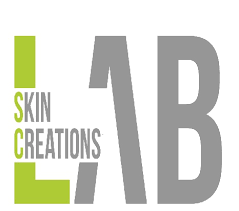LabSkin Créations & Phenocell develops a 3D full-Thickness Skin Equivalent Model Containing Sebocyte Organoids Derived From Human IPS Cells
31 May 2018
Marion ALBOUY 1 , Manon TANGUY 2 , Brigitte ONTENIENTE 2 , Amelie THEPOT 1 , Julien MARUOTTI 2 , Morgan DOS SANTOS 1
1. LabSkinCreations 2. Phenocell
Human skin was the first tissue application to be successfully engineered in vitro by combining the development of advanced cell culture techniques and the elaboration of various scaffolding biomaterials to support cell growth and 3D organization.
Current tissue engineering technologies to develop skin equivalents (SE) often only include the epidermal components and remain partially effective in their ability to restore the complexity of the dermal compartment. To date, none of these approaches regenerate skin appendages including sebaceous glands, which are responsible for the sebum production, essential to maintain the integrity of the skin barrier.
Nowadays, studies about sebaceous glands rely mainly on the use of 2D cell culture models based on immortalized cell lines and most 3D models are ex vivo isolated sebaceous glands with limited shelf life. To overcome these limitations, human induced pluripotent stem cells (hiPSC) reprogrammed from somatic cells represent promising candidates to produce sebaceous glands in 3D under appropriate conditions.
In this view, the aim of this work was to develop an in vitro SE that assumed the human dermal-epidermal architecture and included sebocyte organoids derived from hiPSC. To conduct such research, SEs were prepared by co-culturing fibroblasts with hiPSC into a unique porous scaffold made of chitosancross-linked collagen glycosaminoglycan polymer, subsequently epidermized with keratinocyte. Tissue analysis confirmed that the cultured SEs were morphologically consistent and presented a cohesive dermal-epidermal structure.
Within the dermal compartment, hiPSC-derived sebocytes self-organized into well-defined 3D organoids embedded into extracellular matrix neo-synthetized by fibroblasts. The 3D organoids expressed key sebaceous gland markers such as KRT7 and MUC1 and accumulated lipid droplets. This advanced 3D skin model may be relevant tool to better understand sebocyterelated pathologies such as acne and to effectively identify dermatological compounds regulating sebaceous glands.
CONTACT
Amélie Thepot: amelie.thepot@labskincreations.fr







 Follow us on Linkedin!
Follow us on Linkedin!
You must be logged in to post a comment.